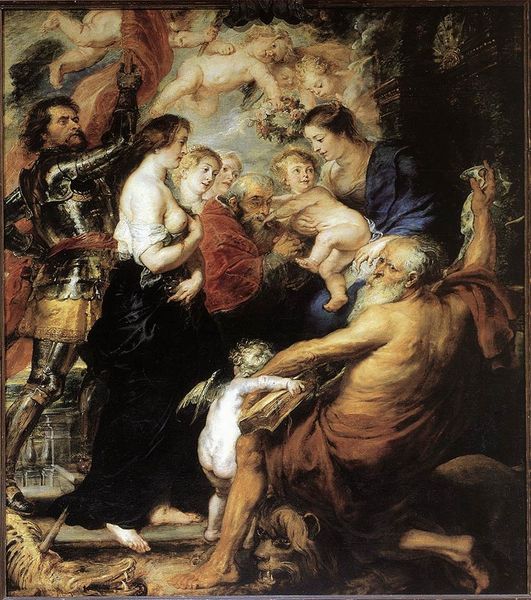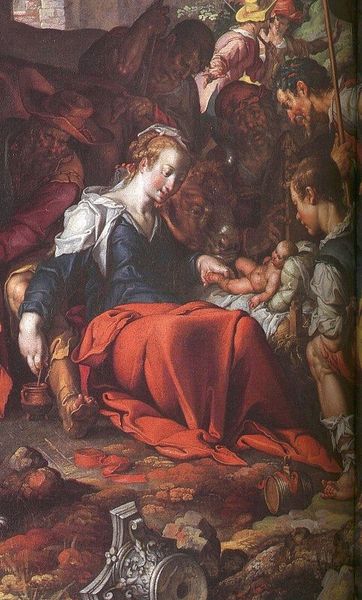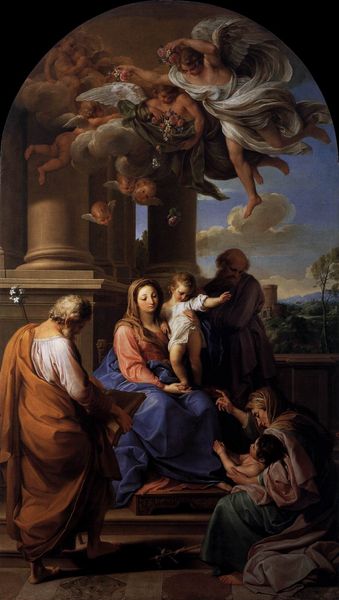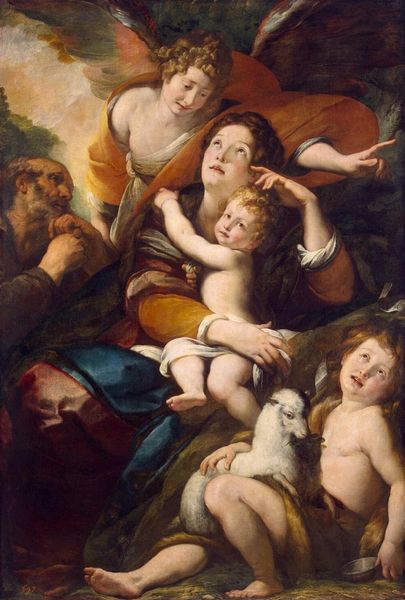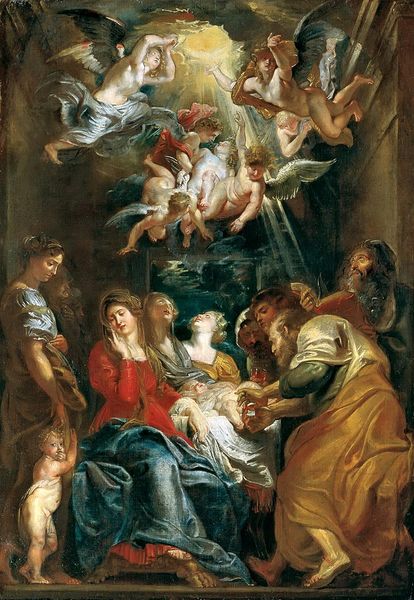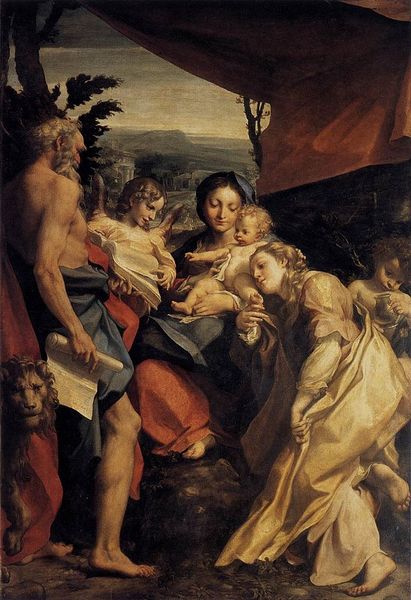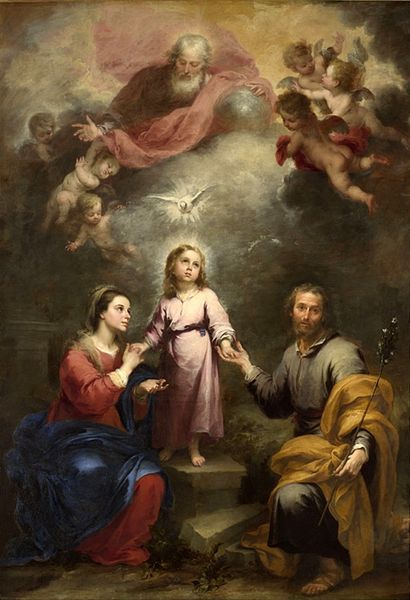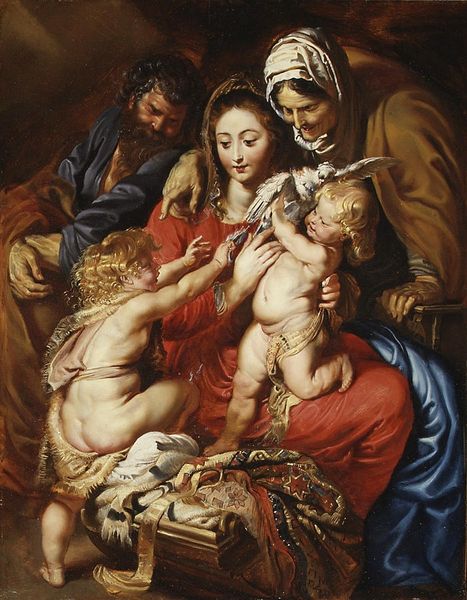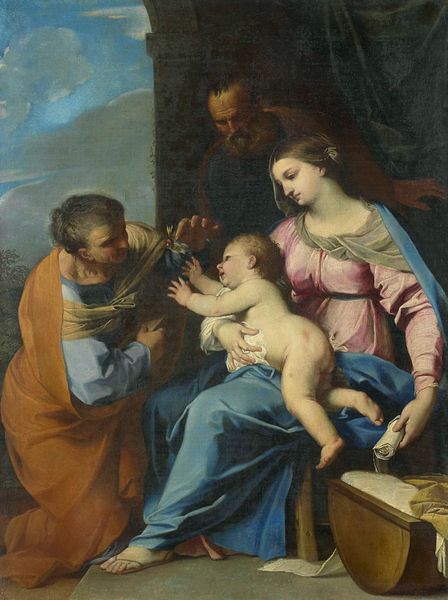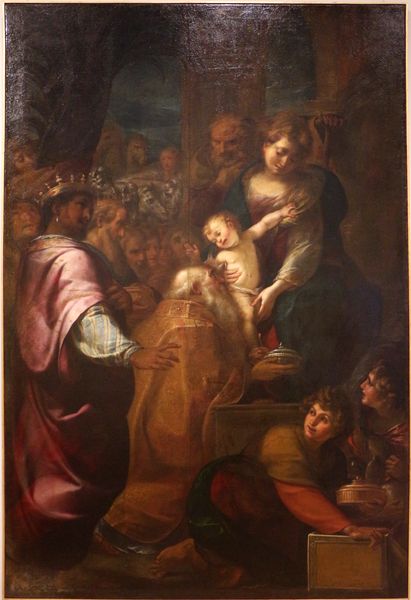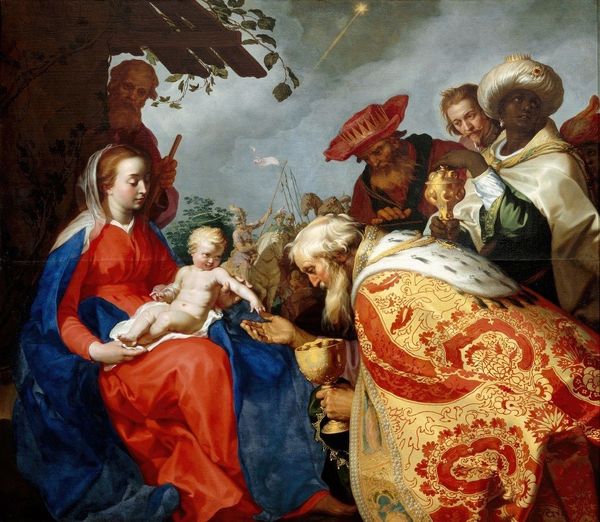
painting, oil-paint
#
portrait
#
baroque
#
painting
#
oil-paint
#
oil painting
#
christianity
#
history-painting
#
virgin-mary
#
christ
Dimensions: 280 x 170 cm
Copyright: Public domain
Editor: This is "Madonna and Saints" by Pietro da Cortona, an oil painting from 1628. The composition is, well, quite busy, but there's a feeling of grandeur. What’s your take on this piece? Curator: "Busy" is an interesting word choice. I see it more as a carefully orchestrated arrangement. But you're right, there's a grandeur here – typical of the Baroque style that Cortona helped pioneer. What does this type of idealized representation of religious figures say about the social and political function of religious art at this time, do you think? Editor: I guess it projects power and legitimacy… to reinforce the church’s authority? Curator: Exactly. And consider the role of gender here. The Madonna is positioned as both powerful and maternal, reinforcing certain expectations of women, even divine ones, during the 17th century. Her calm contrasts with the more dynamic, masculine figures around her, creating a visual hierarchy that mirrors the social hierarchy. Think about how these power dynamics relate to similar visual portrayals of nobility. Do you notice similar aesthetic and emotional patterns? Editor: That makes so much sense! It's like the painting stages and reinforces existing social roles. Curator: Precisely! And we can see how art served to bolster dominant ideologies. It is crucial to unpack these historical portrayals because they have undoubtedly influenced how we perceive identity even today. Editor: It’s unsettling but so important to be aware of. I didn't realize just how deeply these paintings can reflect those values. Curator: Understanding art in its social and historical context, and also in terms of its continuing impact, is why we study it. Editor: I will definitely see paintings with new eyes from now on. Thanks for showing me this different way to see things!
Comments
No comments
Be the first to comment and join the conversation on the ultimate creative platform.

